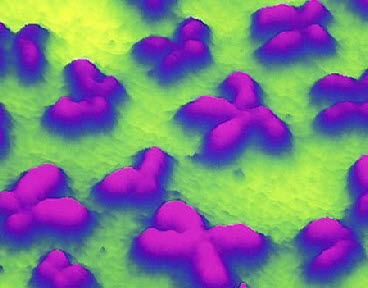

science
Please mouseover difficult words to see what they mean
University of Wisconsin-Madison: 10-Dec-2007
Modern humans in evolutionary fast lane
New research shows that humans have been evolving rapidly for the past 40,000 years. This challenges the widespread belief that human evolution has slowed to a crawl or even stopped.
The new study finds that modern humans' recent past has been a time of extra-fast evolution. This has been driven by cultural changes and an explosive increase in population.
Data for the study came from an international genomics project. The work is published in the 10 Dec issue of the Proceedings of the National Academy of Sciences (PNAS). The research team was led by University of Wisconsin-Madison anthropologist John Hawks.
Hawks estimates that positive selection in the past 5,000 years has been happening roughly 100 times as fast as at any time in human evolution.
Many of the new genetic changes are linked to alterations in human diet caused by the coming of agriculture (Note 1). Another source of change has been resistance to diseases, says the research team. These became major killers when humans first began to live in cities.
The findings will likely lead to a rethinking of our ideas about human evolution, Hawks says. In particular the notion that modern culture has ended evolution in humans does not seem to be true at all.
“We are more different genetically from people living 5,000 years ago than they were different from Neanderthals,” Hawks says.
The research team analysed data from the international HapMap project. This is a global effort to find all the genetic similarities and differences in human beings. It studies genes from distinct populations around the world.
HapMap will in time be used to identify genes that affect human health. But it can also provide a map of genetic variation in our ancestors.
More than 99% of the human genome is the same across all humans. But there are a large number of differences in DNA called single nucleotide polymorphisms or SNPs (Note 2). This is pronounced “snips”.
The Hapmap project has mapped roughly 4 million of these SNPs. There are estimated to be 10 million of them in all. The project is also identifying different regions of DNA known as haplotypes, which contain a large number of SNPs and are shared by many people.
All this Hapmap data is being used in many ways by scientists around the world. The research carried out by Hawk and his colleagues is using a technique called linkage disequilibrium decay or LDD.
Human DNA is shuffled from one generation to the next. This is called 'recombination'. But a chunk of DNA that gives its owner an advantage quickly spreads through a population. So long, uninterrupted segments carried by large numbers of people are strong evidence of a fairly recent evolutionary change - recent enough for recombination not to have broken them up again. This is what the scientists have been looking for.
Using this test, they found evidence of recent selection on roughly 1,800 genes. This is 7% of all human genes.
Conventional wisdom is that the pressures of natural selection on humans are less nowadays than in the past, Hawks says. But genetic changes are now being driven by major changes in human culture .
A good example is lactase, the substance that helps people digest milk. The gene for this normally stops being active when children grow up. But northern Europeans have developed a variety of the gene that lets them drink milk all their lives. This is a recent adaptation caused by farming and the widespread use of milk.
The biggest new pathway for selection is in resistance to disease, Hawks says. People started living in much larger groups and settling in one place roughly 10,000 years ago. That's when epidemic diseases such as malaria, smallpox and cholera began to dramatically change the patterns of deaths.
Malaria is one of the clearest examples, Hawks says. Scientists have found more than two dozen genetic adaptations related to malaria resistance. These include a whole new blood type known as the Duffy blood type.
Another recently discovered gene, CCR5, first appeared about 4,000 years ago. It now exists in about 10% of European people. It was discovered recently because it makes those who have it resistant to HIV/AIDS. But its original value might have been in fighting smallpox.
“There are many things under selection that are making it harder for pathogens to kill us,” Hawks says.
Population growth is making these changes happen much faster than they would otherwise have done. Charles Darwin pointed out that the size of the herd “is of the highest importance for success”. This is because the larger the population the more genetic variation there is in it.
It is the same for humans. The population of the world has grown very rapidly. There were only a few million people 10,000 years ago. This had grown to 200 million people by the beginning of the Christian era.
By the year 1700 there were 600 million people in the world. And today there are more than 6.5 billion.
Before these times, the population was so small for so long that positive selection happened very, very slowly, Hawks says.
The recent changes are especially striking. “Five thousand years is such a small sliver of time. It's 100 to 200 generations ago,” he says.
“That's how long it's been since some of these genes originated, and today they are in 30 or 40% of people because they've had such an advantage.
"It's like ‘invasion of the body snatchers.'”
Notes
1) The “coming of agriculture” hyperlink is to an online video from Annenberg, which requires first-time users to register. The process is free and straightforward.
2) The SNPs hyperlink is to a page of video clips. Scroll down to the one entitled “Single Nucleotide Polymorphisms”.
More help with words
average
breed
conception
fertile
fertilisation
genes
genome
hypothesis
inherited
molecule
origins
species
sperm
tentative
What's it all about?
10-Dec-2007
Human biology
